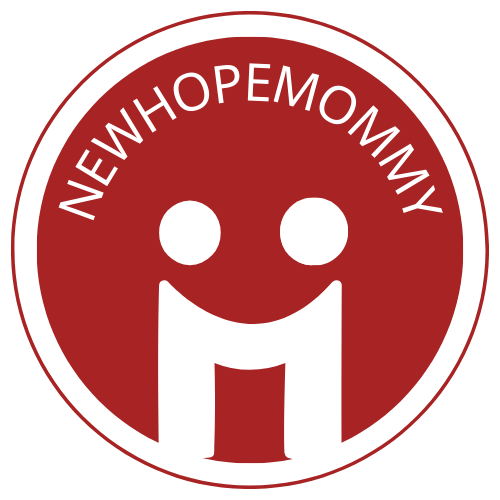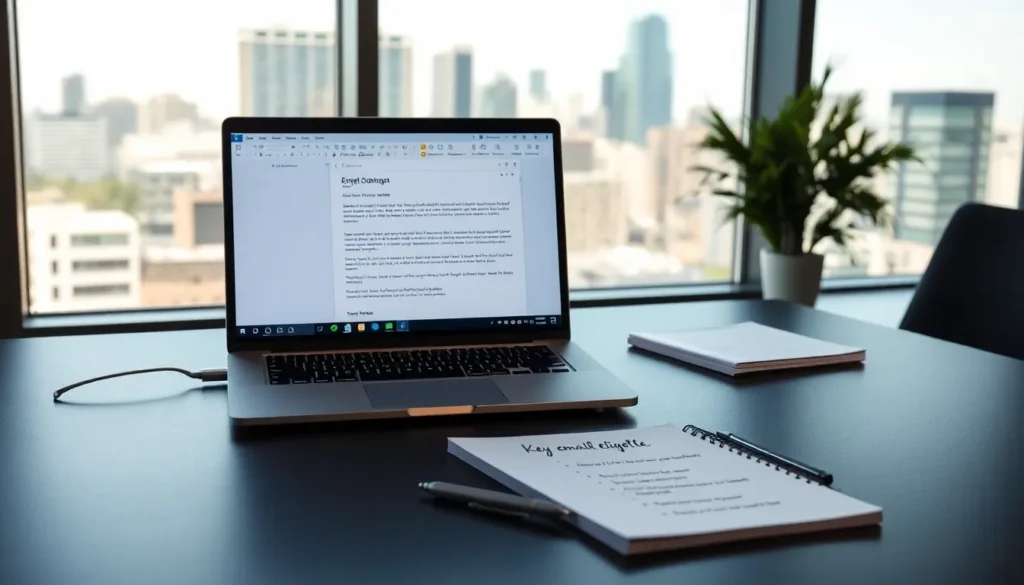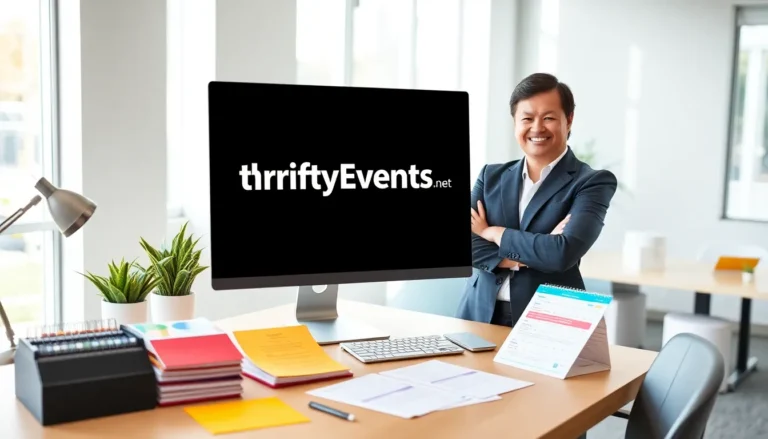In today’s fast-paced digital world, mastering email communication is essential. You know, that little tool that once replaced the carrier pigeon? Yep, that’s right. Email now carries the weight of business communication, networking, and everything in between, all while being quicker than a coffee run. So, how can you ensure you’re not just another name in someone’s crowded inbox? Let’s jump into the essential elements of effective email communication, because first impressions matter, and your email could save the day, or ruin it.
Table of Contents
ToggleUnderstanding Email Communication

The Importance of Email Etiquette
Email etiquette is like the unspoken rules at a dinner party. Knowing how to act can either make or break your professional relationships. Proper email etiquette includes using a professional tone, addressing recipients appropriately, and being mindful of your language. You wouldn’t show up to a board meeting in flip-flops, would you? The same applies to emails: dress your message up appropriately.
Common Mistakes to Avoid
Ever sent an email only to realize you forgot an attachment? We’ve all been there, and it can be cringeworthy. Common mistakes include using vague subject lines, neglecting to proofread, or failing to consider the tone, which can lead to misunderstandings. In a world driven by instant messaging, don’t forget that emails require thoughtfulness and clarity. Double-check your work: your future self will thank you.
Enhancing Your Email Skills
Crafting Effective Subject Lines
Your subject line is the gateway to your email. It’s the first thing recipients see, and it determines whether they’ll open your email or toss it aside like last week’s leftover pizza. A good subject line should be clear, concise, and engaging. Get straight to the point and avoid clickbait, it may anger your coworkers more than intrigue them.
Structuring Your Email Content
Structure matters, think of it like building a house. A solid foundation is necessary for an effective email. Start with a greeting, followed by a short introduction, the body containing your main points, and finally a well-crafted conclusion or call to action. Using bullet points or numbered lists can enhance readability and keep your message organized. Most importantly, keep paragraphs short: nobody wants to read an essay in their inbox.
Tips for Professional Tone and Language
A warm tone can work wonders, but professionalism is key. Avoid jargon unless you’re sure your recipient understands it. Keep the language straightforward and respectful. A good tip is to imagine you’re writing to a respected colleague, what would you say? Avoid being overly casual, and steer clear of emojis or abbreviations like “LOL.” The balance is essential.
Utilizing Email Tools and Features
Organizing Your Inbox
An organized inbox can make all the difference. Use folders to categorize different types of emails, from clients to newsletters. A clean inbox leads to increased productivity by reducing the time spent searching for essential messages.
Using Filters and Labels
Filters and labels are your friends. Set up rules to automatically sort incoming messages into specific folders, prioritizing high-importance emails. This way, you can spend less time sorting and more time responding to what truly matters.
Scheduling and Tracking Emails
Ever wish you could send emails at a later time? You can. Scheduling tools allow you to compose emails at your convenience and send them when appropriate. Plus, tracking tools can help you gauge when recipients open your emails, offering valuable insights that can help tailor future communications.





